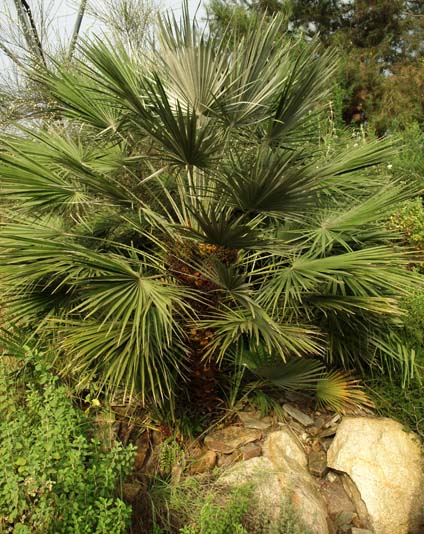Chamaerops humilis var. humilis Information
A clump-forming, smallish, drought tolerant, moderately slow growing, dioecious palm. Common in cultivation, and common in the wild. It has hairy, dark-grey trunks, 6 m. (20 ft.) tall, 30.5 cm. (12 inch) diameter with persistent leaf-bases and no obvious leaf scars, and large partially segmented, palmate (fan) leaves, 0.9 m. (3 ft.) long, 0.9 m. (3 ft.) wide, green above and beneath.
Usually dioecious occasionally monoecious. A very variable species, and provenance plays an important role in the plant's hardiness to cold. I have had almost identical looking plants in the ground side-by-side where 1 plant from a less hardy provenance was killed by -4.5°C. and the other plant was totally un-touched by the cold. This is the world's most northerly naturally occurring palm species.
Chamaerops humilis var. humilis can tolerate freezing temperatures to about -12°C (10.4°F). It naturally occurs in open, sun exposed, montane or lowland hilly locations, and should be planted to maximise sunshine exposure. Under extreme freezing conditions we recommend you keep this palm as dry as possible, which will usually mean constructing a glass or plastic roof over the plant to keep rain off. Any cover placed over this palm during times of rain or during cold nights must be removed or vented during hours of sunshine or the plant could be severely heat exhausted.
General Information:
Native to coastal areas of the Western Mediterranean, both in Europe and N. Africa, naturally found on sandy, rocky ground or coastal hills from sea level to 600m altitude.
Distribution:
Native to
Work in progress
Distribution Information currently being revised!

